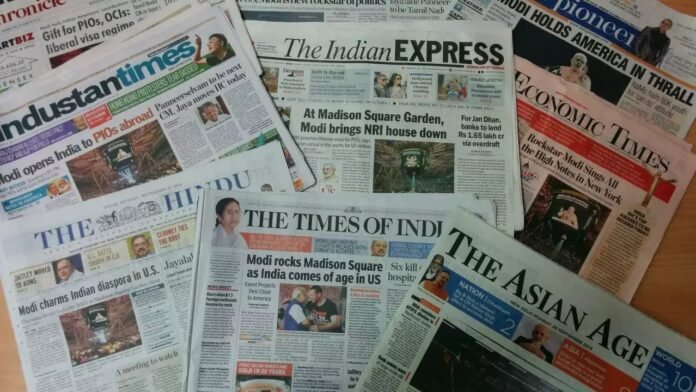
The publisher of Tamil daily Dinamalar, L. Adimoolam, speaks out on India’s media data currency, the IRS pilot study, and the prevalent bias of ad agencies towards English dailies.
The issue of the print media space for English versus language dailies has been lingering in my mind for years. On one side, there is only one leading English daily, and on the other, the rest of the print industry.
In a country where 80% or more of the media is language-driven, and we all speak of cultural and language differences as a key to the multiplicity with which we demonstrate our unity as a nation, why is English, and that too one English daily, taken as a constant when it comes to the allocation of print media advertising? I am also sure that everyone has heard that the English print reader of news has migrated to the digital space. Then why still invest in English print so heavily?
Recently, if you had observed, 75% of the GST ads have gone to one English daily, and a few to other English dailies. I am also aware that these are only a few (can be counted using only three fingers). And these have highly diminished circulation numbers, as the so-called top dailies have stayed out of the ABC audit. I emphasize here that their fear of the ABC and their opting out is because of the shameful numbers that they wish to hide, and to continue selling advertising in the market based on their past glories.
It is sad to see that agencies and clients are willing to believe them. If you look at the money that goes to the handful of English dailies, it is not at all proportionate to their circulation and readership. I am sure that it is not enough to just create brand stories (assuming it does create these) using English print media.
I leave the GST advertising allotment issue with a question. Is the GST rate drop information or an advertisement, more beneficial to the language reader or to the English reader? I think that these should have been pushed more into the language dailies, rather than mostly in one English daily.
I offer Tanishq with Madison as the incumbent ad agency, as an example. Language print media has far greater penetration than English print media does in circulation and readership. However, it gets second-hand treatment from agencies. Sometimes, I feel the individual (responsible person on the client and agency side) believes that what he or she consumes is what the majority of the universe consumes. This hypothesis needs to be corrected.
The latest example is the Tata Capital IPO, which was allotted two-page jackets in all the English and business newspapers, and of course, three Gujarati papers were included as well. So either Tata or the agencies believe that only Gujaratis and the English-speaking population have the money to invest in an IPO.
We know that all English newspapers are metro-centric and have limited presence beyond these large cities. Do the agencies believe the economy has not reached beyond metros for people to invest? Moreover, business newspaper readers were aware of the Tata Capital IPO; the ads were not likely to bring them additional business.
While banks do give savings account ads to language dailies, mutual funds, credit cards, bank and insurance product ads are given only to English dailies. If you question the agencies about this, they say TOI is pan-India. Is Manorama not pan-India? Is Rajasthan Patrika not pan-India, nor Mathruboomi or Eenadu, which have more than ten editions other than in their own state?
Coming to ABC and IRS data, the industry says it wants a common currency, but no one wants to follow it. Agencies use the data only against the lower rung of both the language and English dailies, only to squeeze on rates. I will also make an allegation here that no one knows in depth the habits and behavior of the population, people, or audience that a publication caters to. In some cases, agencies blindly follow the IRS, and in other cases, when their negotiation power is weak, they succumb to the power of the daily itself. This is beneficial to the top language dailies as well. In case it is beneficial to them, they prefer to remain quiet and not fight for the overall increase of advertising in language dailies.
Another often discussed topic in the industry is the pilot regional IRS study combining both print and digital data. The region of the study is maintained as a secret. My question here and now is, why IRS at all? If agencies are going to do their media planning by thinking that the metro market and there too, that English media is enough, there is no reason for a print media currency called IRS. My advice is not to even venture with this pilot study, which will have a small sample size, and then say that owners and publishers are not funding the project, for it to look like a complete mockery to the media world.
I am open to learn more on this and will always keep fighting for more investment into language dailies across the States of India – to completely cover the length and breadth of the country for the growth of clients’ business. This question has been fought for many decades by many elders in this industry. I will also keep doing the same …
Awaiting to hear from you.
Adimoolam, Publisher-Dinamalar, can be reached at adimoolam@dinamalar.in
















